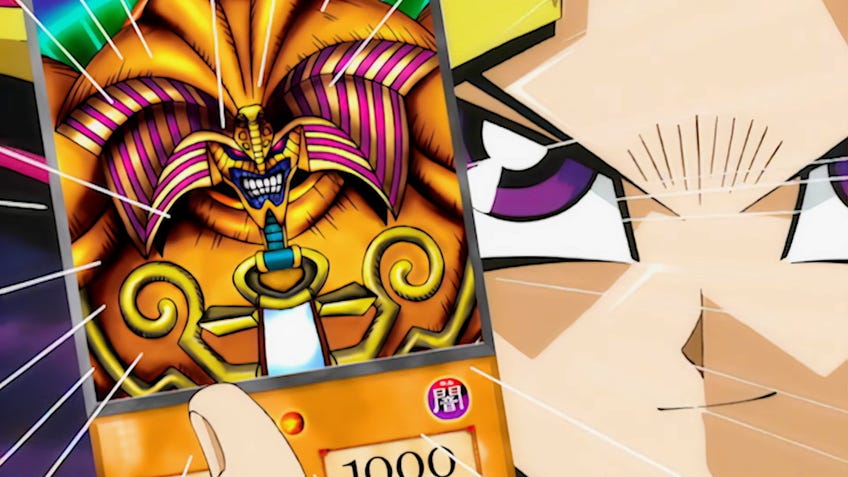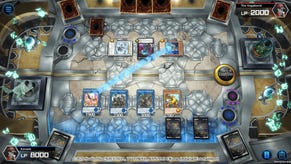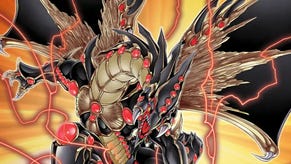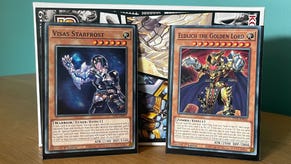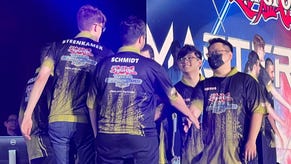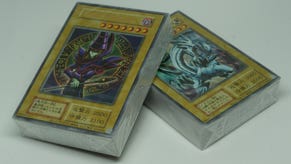The history of Yu-Gi-Oh!’s Exodia, the most complicated win condition in trading card games
Victory for an arm and a leg?
Throughout Yu-Gi-Oh!’s 25-year history, many of the over 10,000 cards printed have changed and altered how players approach the game. As with many trading card games, there are sets of cards that perfectly work together within a deck to ensure maximum synergy between cards. Runick cards play hand in hand to mill the opponent’s deck. Dark Magician cards work together to help summon anime star Yugi Moto’s favourite wizard lad and so on and so forth.
However, there is one set of cards so unique that, not only do they form their very own path to victory, but they force players to take ever more elaborate and often bizarre tactics to even stand a chance of pulling it off. This tactic is one of the most complicated win conditions not only within Yu-Gi-Oh! but across the whole pantheon of TCGs.
To make it even more special, its involvement in the very first episode of the Yu-Gi-Oh! anime has made it synonymous with the heart of the cards and the game as a whole. This is the history of Exodia.
Before we can dive head-first into exactly how Exodia decks work in modern Yu-Gi-Oh!, we need to understand a little about the cards themselves and their place in the quarter-century history of the franchise.
Its instant-win condition made Exodia a must-have set of cards from the very beginning.
Exodia the Forbidden One is a monster that is made up of five separate cards. The Left Leg, Right Leg, Right Arm, Left Arm and, finally, an effect monster actually named Exodia the Forbidden One. (I will refer to this card as the head going forwards.) Each separate section is useless on its own, with each limb only possessing 200 attack and 300 defence, and the head 1000 attack and defence. But if you manage to collect all five pieces in your hand, you win the duel - just like that. You don’t have to play them on the field, it doesn’t even matter what your opponent has on the field at that point; they have lost and you have won.
This win condition made Exodia a must-have set of cards from the very beginning. Exodia was a part of the very first run of Yu-Gi-Oh! cards printed in the Legend of Blue Eyes White Dragon set in 2002, alongside legendary cards like the titular Blue-Eyes White Dragon, Dark Magician and everybody's favourite meme, Pot of Greed. Publisher Konami continued the mystique of the set further by making each card an Ultra Rare within the set, making little kids like me equally as excited pulling a limb as pulling Gaia The Fierce Knight.
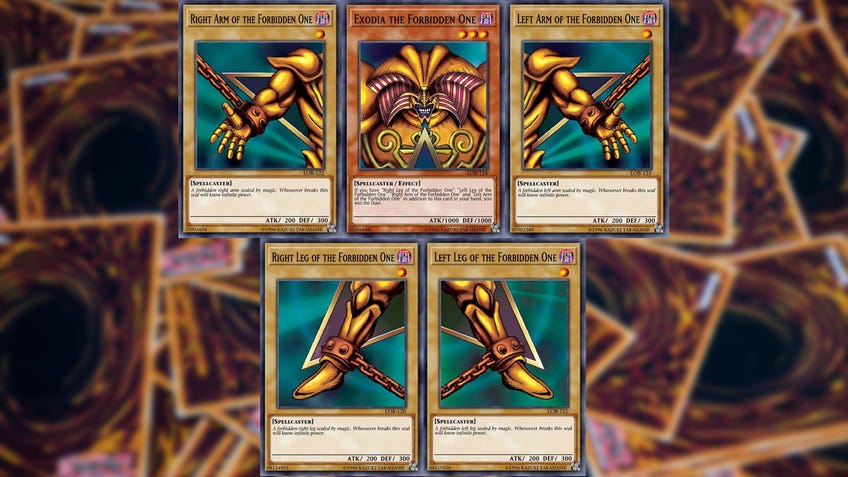
It wasn’t the rarity of this set of cards alone that made Exodia so appealing. In fact, the appeal of Exodia was formed much before the cards were even printed, thanks to Exodia’s explosive appearance in the very first episode of the Yu-Gi-Oh! anime.
Yu-Gi-Oh! first aired in Japan in 2000 before making its Western debut in 2001 (with over a year delay, thanks in no small part to severe editorialising across the whole series from US producer 4Kids Entertainment). The debut episode has everything: Yugi Moto transforming thanks to the Millenium Puzzle, Seto Kaiba being a nefarious bully, Joey Wheeler being a delightful idiot. There’s Blue-Eyes, there’s Dark Magician and there’s the perfect example of how half-baked the game mechanics of Yu-Gi-Oh! were in the early days as Kaiba casually sets three Blue-Eyes without tribute summoning or anything. It has it all.
The most memorable scene happens right at the end of the episode. When everything looks bleak for our hero, he manages to pull the final piece of Exodia and “Obliterate’s” Kaiba’s mind. Thanks to the heart of the cards, our unlikely hero beats the invincible foe. It’s majestic - and instantly made Exodia the cards to have.

So, why aren’t all decks rocking some pieces of Exodia if drawing them allows for an instant win? To answer this, we have to go back to my best friend and yours: mathematics.
You need to get incredibly creative to win a game with Exodia.
A Yu-Gi-Oh! deck has to be between 40 to 60 cards. Unless you’re running a deck specifically built to be larger, most of the time you want to ensure your deck is no more than 40 cards - as a smaller deck increases your chances of pulling the card you want. In Yu-Gi-Oh! you can typically have three copies of a single card. So, the odds of pulling the card you want in your opening hand of a 40-card deck are 30.1%. If you have three copies of each part of Exodia, you are taking up 15 cards of a 40-card deck. The chances of pulling one card from the set in your opening hand are a whopping 91.9%, with getting five Exodia cards sitting at around 4%. Easy so far: put Exodia all over your deck and rely on the heart of the cards!
There are a few issues with this. Unfortunately, mathematics isn’t quite as fond of the supernatural as dear Yugi boy. That 4% chance of getting a hand full of Exodia pieces does not account for multiples of the same card. (Three Left Legs and two Right Arms are not helpful to anyone.)
To make matters more complex, the pieces of Exodia are limited to just one of each piece in a deck. That means instead of Exodia taking up 15 cards of a 40-card deck, Exodia only takes five - lowering the odds of pulling an Exodia piece in your opening hand from 91.9% all the way down to 39%. So, with no heart of the cards, maths not on your side and cards that are useless individually, you need to get incredibly creative to win a game with Exodia.
There are two objectives when playing Exodia: stalling your opponent and fetching cards. Stalling is easy enough - hand traps like Ash Blossom & The Joyous Spring and Effect Veiler will help thwart your opponent in some ways - but in reality, you also need to stop your opponent from attacking you. Spells like One Day of Peace do this perfectly alongside the other, much more important aspect of an Exodia deck - getting cards from your deck to your hand. You absolutely need to be able to do this, whether through drawing additional cards from spell effects like One Day Of Peace and Dark World Dealings.
Equally, having monsters that allow you to fetch is also vital. Royal Magical Library will work perfectly alongside all the spells you’re casting to help draw cards. Sacrificial monsters like Saigan allow you to fetch a normal monster from the deck when destroyed, providing instant access to a limb. Chicken Game will allow you to draw cards. Upstart Goblin the same. There is no shortage of card-fetching spells, but you have to be prepared to pull cards from all over the place to do so.

These cards are all pulled from different Yu-Gi-Oh! booster packs. Cards from completely different engines are used in ways they never were envisaged to be used, all in the name of pulling five specific cards from your deck. All of this results in a deck with no synergy on paper, but in-game, a beautiful - if chaotic - well-oiled machine with one goal: get Exodia.
There are easier ways to win a game of Yu-Gi-Oh! Just perusing the best Yu-Gi-Oh! decks will display a myriad of monster types and engines that are much easier to assemble and play. But there is something particularly thrilling about Exodia, whether that’s its place in the pantheon of Yu-Gi-Oh! history or the simple joy of building a deck so wholly focused on one eccentric goal. One thing is for certain: every player should build at least one Exodia deck and show everyone watching that Yugi’s Grandpa’s deck has no weak cards.
